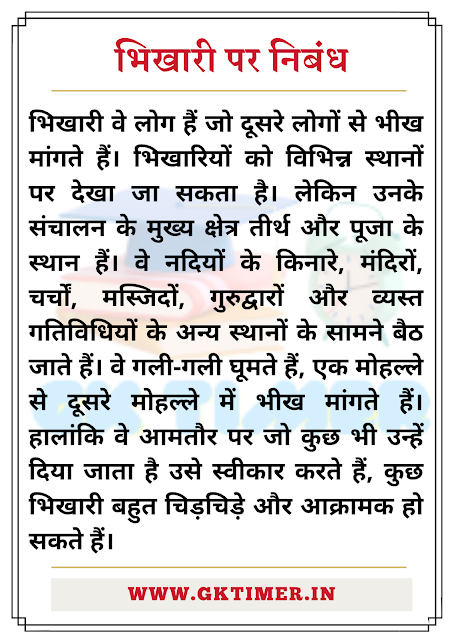Explore our comprehensive guide to World History GK Questions, perfect for students, quiz enthusiasts, and history buffs alike. Dive into a treasure trove of fascinating facts and insights spanning ancient civilizations to modern events. Ace your exams and quizzes with our expertly curated questions. Start your journey through time today!
1. D-Day is the day when :
Correct Answer:-[C] ( Allied Troops landed in Normandy )
Description:- D-Day is a term often used in military parlance to denote the day on which a combat attack or operation is to be initiated. The best known D-Day is June 6, 1944 — the day of the Normandy landings — initiating the Western Allied effort to liberate mainland Europe from Nazi occupation during World War II. However, many other invasions and operations had a designated D-Day, both before and after that operation.
2. The war criminals of the II World War were put to trial in
Correct Answer:-[A] ( Nuremburg )
Description:- Nuremberg is a city in the German state of Bavaria, in the administrative region of Middle Franconia. Between 1945 and 1946, German officials involved in the Holocaust and other war crimes were brought before an international tribunal in the Nuremberg Trials. The city had been the location of the Nazi Party’s Nuremberg rallies and the laws stripping Jews of their citizenship were passed there.
3. Who were the Axis powers in World War-II ?
Correct Answer:-[D] ( Germany, Italy, Japan )
Description:- Axis Powers was the alignment of nations that fought in the Second World War against the Allied forces. The Axis grew out of the Anti-Comintern Pact, an anticommunist treaty signed by Nazi Germany and the Empire of Japan in 1936. The Kingdom of Italy joined in 1937. The “Rome–Berlin Axis” became a military alliance in 1939 under the Pact of Steel, with the Tripartite Pact of 1940 leading to the integration of the military aims of Germany and its two treaty-bound allies. At their zenith during World War II, the Axis powers presided over empires that occupied large parts of Europe, Africa, East and Southeast Asia, and islands of the Pacific Ocean.
4. The Second World War started in the year—
Correct Answer:-[B] ( 1939)
Description:- World War II was a global war that was underway by 1939 and ended in 1945. It involved a vast majority of the world’s nations—including all of the great powers—eventually forming two opposing military alliances: the Allies and the Axis.
5. The immediate cause for the outbreak of the first World War was
Correct Answer:-[A] ( the assassination of Archduke Francis Ferdinand )
Description:- The World War I was a global war centred in Europe that began on 28 July, 1914 and lasted until 11 November, 1918. The assassination on 28 June 1914 of Archduke Franz Ferdinand of Austria, the heir to the throne of Austria-Hungary, by a Yugoslav nationalist in Sarajevo, Bosnia was the proximate trigger of the war. It resulted in a Habsburg ultimatum against the Kingdom of Serbia.
6. One of the important factors that led to the IInd World War the humiliating provisions in one of the following treaties. Which is that treaty ?
Correct Answer:-[B] ( Treaty of Versailles )
Description:- One of the most important and controversial provisions of the Treaty of Versailles required Germany to accept responsibility for causing the war and, under War Guilt clauses to disarm, make substantial territorial concessions and pay heavy reparations to certain countries that had formed the Entente powers. The result of these competing and sometimes conflicting goals among the victors was compromise that left none contented: Germany was not pacified or conciliated, nor permanently weakened. This would prove to be a factor leading to World War II.
7. The first atomic bomb was thrown over :
Correct Answer:-[B] ( Hiroshima )
Description:- Hiroshima is the capital of Hiroshima Prefecture, and the largest city in the Chugoku region of western Honshu, the largest island of Japan. It is best known as the first city in history to be targeted by a nuclear weapon when the United States Army Air Forces (USAAF) dropped an atomic bomb on it at 8:15 A.M. on August 6, 1945, near the end of World War II. Its name means “Wide Island”.
8. In which cities of Japan were atomic bombs dropped during World War II ?
Correct Answer:-[D] ( Hiroshima and Nagasaki )
Description:- Atomic bombs were dropped on Hiroshima and Nagasaki in August 1945. American airmen dropped ‘Little Boy’ (codename of the bomb) on the city of Hiroshima on August 6, 1945 followed by Fat Man over Nagasaki on August 9, 1945.
9. During the Second World War, which one of the following countries was not one of the three Axis Powers, which fought against the Allied Powers ?
Correct Answer:-[C] ( China )
Description:- Axis Powers was the coalition headed by Germany, Italy, and Japan that opposed the Allied Powers in World War II. The alliance originated in a series of agreements between Germany and Italy, followed by the proclamation of an “axis” binding Rome and Berlin (October 1936), followed by The German-Japanese Anti-Comintern Pact against the Soviet Union (November 1936).
10. The first Atom bomb was dropped on Hiroshima on
Correct Answer:-[A] ( 16655)
Description:- A uranium gun-type atomic bomb (Little Boy) was dropped on Hiroshima on August 6, 1945. It was followed by a plutonium implosion-type bomb (Fat Man) on the city of Nagasaki on August 9, 1945. The twin bombings led to Japan’s surrender in the Second War.
12. The theory of “natural rights” was propounded by
Correct Answer:-[B] ( Locke )
Description:- The most central concept in Locke’s political philosophy is his theory of natural law and natural rights. John Locke emphasized “life (everyone is entitled to live once they are created), liberty (everyone is entitled to do anything they want to so long as it doesn’t conflict with the first right) and property (everyone is entitled to own all they create or gain through gift or trade so long as it doesn’t conflict with the first two rights)” as primary natural rights. In his theory, the social contract is an agreement between members of a country to live within a shared system of laws. Specific forms of government are the result of the decisions made by these persons acting in their collective capacity. Government is instituted to make laws that protect these three natural rights. If a government does not properly protect these rights, it can be overthrown.
13. During 18th century who among the following philo-sophers said these famous words? “Man is born free but is every where in chains.”
Correct Answer:-[C] ( Jean Jack Rousseau )
Description:- Rousseau’s most important work is The Social Contract, which outlines the basis for a legitimate political order within a framework of classical republicanism. Published in 1762, it became one of the most influential works of political philosophy in the Western tradition. It developed some of the ideas mentioned in an earlier work, the article Economie Politique (Discourse on Political Economy), featured in Diderot’s Encyclopedie. The treatise begins with the dramatic opening lines, “Man is born free, and everywhere he is in chains. Those who think themselves the masters of others are indeed greater slaves than they.”
14. Who were the three eminent statesmen who started the Nonaligned Movement ?
Correct Answer:-[D] ( Jawaharlal Nehru, Gamal Abdul Nasser, Marshal Tito )
Description:- The organization was founded in Belgrade in 1961, and was largely the brainchild of Yugoslavia’s president, Josip Broz Tito; Indonesia’s first president, Sukarno; Egypt’s second president, Gamal Abdel Nasser; Ghana’s first president Kwame Nkrumah; and India’s first prime minister, Jawaharlal Nehru. All five leaders were prominent advocates of a middle course for states in the Developing World between the Western and Eastern blocs in the Cold War. The phrase itself was first used to represent the doctrine by Indian diplomat and statesman V.K. Krishna Menon in 1953, at the United Nations.
15. Who is called the “Greatest investigator of antiquity” ?
Correct Answer:-[B] ( Darwin )
Description:- The discovery of human antiquity was a major achievement of science in the middle of the 19th century, and the foundation of scientific paleoanthropology. Charles Darwin established that all species of life have descended over time from common ancestors, and proposed the scientific theory that this branching pattern of evolution resulted from a process that he called natural selection, in which the struggle for existence has a similar effect to the artificial selection involved in selective breeding. Darwin’s work established evolutionary descent with modification as the dominant scientific explanation of diversification in nature. In 1871 he examined human evolution and sexual selection in The Descent of Man, and Selection in Relation to Sex, followed by The Expression of the Emotions in Man and Animals.
16. Herodotus is considered as the father of
Correct Answer:-[A] ( History )
Description:- Herodotus has been called the “Father of History”, and was the first historian known to collect his materials systematically, test their accuracy to a certain extent and arrange them in a well-constructed and vivid narrative. The Histories—his masterpiece and the only work he is known to have produced—is a record of his “inquiry”, being an investigation of the origins of the Greco-Persian Wars and including a wealth of geographical and ethnographical information.
17. Who has given the statement “Man is born free but he is always in chain ?”
Correct Answer:-[B] ( Rousseau )
Description:- Jean-Jacques Rousseau was a Genevan philosopher, writer, and composer of 18th-century Romanticism of French expression. His most important work is The Social Contract, which outlines the basis for a legitimate political order within a framework of classical republicanism. Published in 1762, it became one of the most influential works of political philosophy in the Western tradition. It developed some of the ideas mentioned in an earlier work, the article Economie Politique (Discourse on Political Economy), featured in Diderot’s Encyclopedie. The treatise begins with the dramatic opening lines, “Man is born free, and everywhere he is in chains. Those who think themselves the masters of others are indeed greater slaves than they.”
18. What is the name of the world’s smallest republic which has an area of 21 sq. km only ?
Correct Answer:-[A] ( Nauru )
Description:- Nauru, formerly known as Pleasant Island, is an island country in Micronesia in the South Pacific. It is the world’s smallest republic, covering just 21 square kilometres. With 9,378 residents, it is the second least-populated country after Vatican City.
19. Natural Rights theory was advocated by
Correct Answer:-[B] ( Locke )
Description:- The existence of natural rights has been asserted by different individuals on different premises. Different philosophers and statesmen have designed different lists of what they believe to be natural rights; almost all include the right to life and liberty as the two highest priorities. John Locke emphasized “life, liberty and property” as primary. In his The Social Contract, Rousseau put forward the idea of an exchange of one type of freedom (natural freedom) for another type (civil freedom).
20. Economic dimensions of justice have been emphasised by
Correct Answer:-[C] ( Socialists )
Description:- Socialism lays more emphasis on the economic dimension of justice. Without economic justice, one cannot achieve the objectives of social and political justice. For economic justice, there should be sufficient production of essential goods. Basic necessities of life must be available to all. The aim of social justice is to protect the interest of minorities and eradicate poverty, unemployment and illiteracy from the society.




